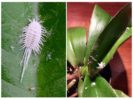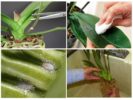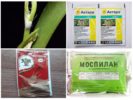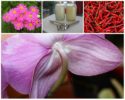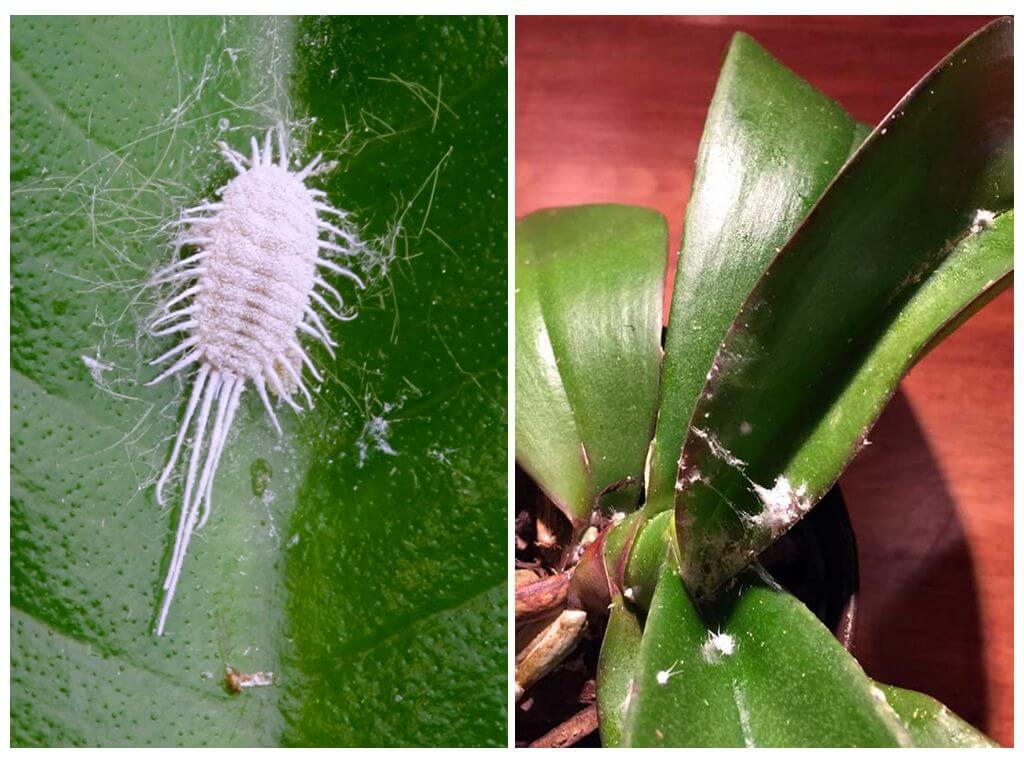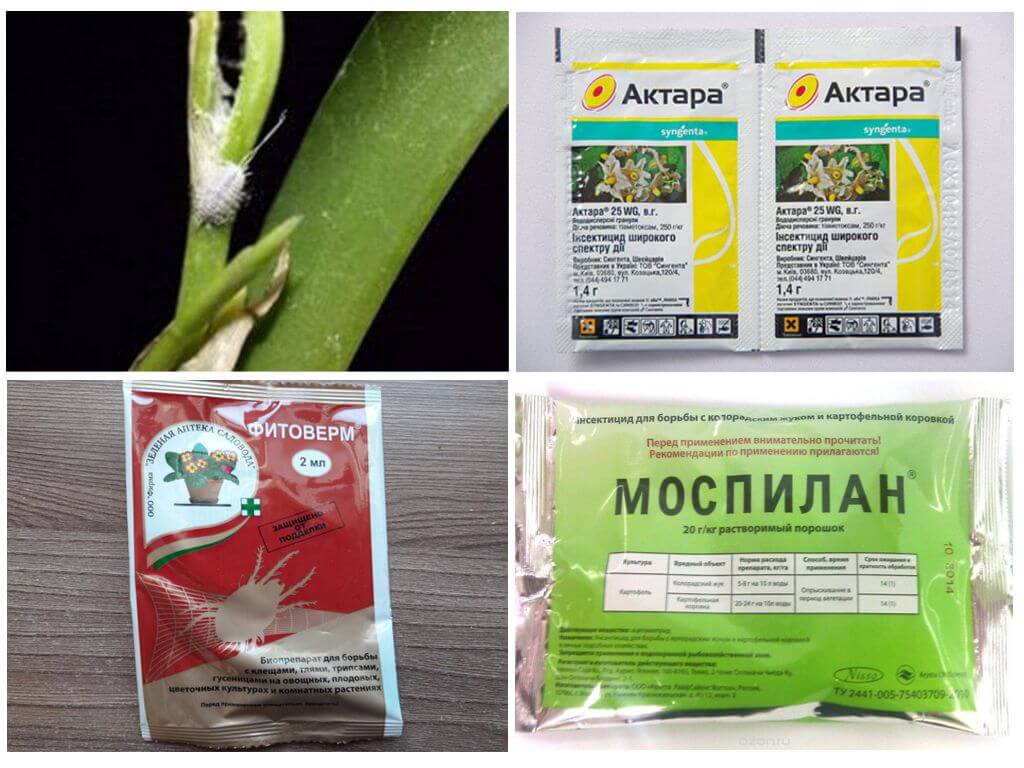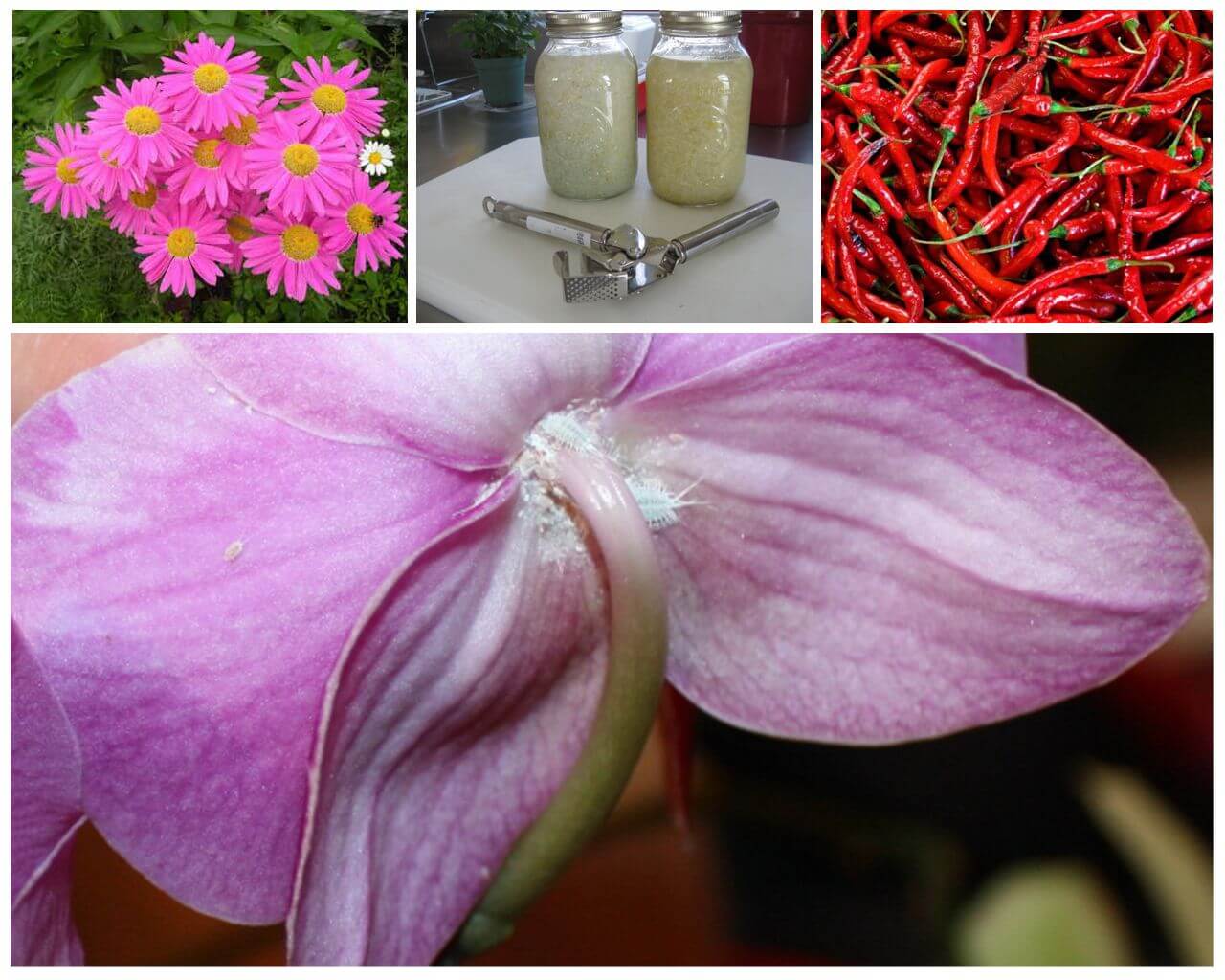- Mealybug on orchids
- The mechanical way to eliminate the pest
- The chemical way to deal with a worm
- Folk recipes from mealybug
Indoor flowers not only decorate the apartment, making it more comfortable, but also contribute to air purification. However, like all living organisms, they are also characterized by diseases, the cause of which is not only improper care, but also the attack of harmful insects. Not the last place in the list house plant pests takes a mealybug. The insect uses the juice of an indoor plant as food, causing the latter significant damage. In addition, the nectar secreted by the pest causes the green friend no less harm, the composition of which contributes to the appearance of moldy fungi and attracts its relatives. Therefore, the question of how to get rid of the powdery mealybug on orchids is not at all idle for gardeners.
What does it look like
With mealybug many orchid lovers had to face. The insect is a member of the family of half-winged, having an external resemblance to shields. The oval slightly flattened body of adults reaches 5 mm. The surface of the body is covered with a white sometimes slightly pink powdery coating with fringes on the edges, which is why the pest got its name. Mealybug is the owner of a sucking mouth apparatus. How the insect looks can be seen in the photo.
Plants infected with insects are marked with white fiber resembling cobwebs or cotton wool. Under it, females usually lay their eggs. Therefore, the presence of shaggy balls on a green pet means that a mealybug appeared on the orchid.
On a note!
Pests rarely infect a plant with proper care. Therefore, the appearance of mealybugs on orchids is evidence of insufficient attention and poor quality care for a green pet.
Signs of infection
The following symptoms indicate that a mealybug appeared on orchids:
- the presence of flour on leaf plates;
- the appearance on the leaves of the paddy - sticky secretions;
- the formation of bright spots in the damaged areas of the sheet.
Orchids infected with a worm begin to turn yellow, wilt, and then fall off the leaves. The buds of flowering plants and already blossoming flowers are also affected. A large number of pests contributes to the deformation of young shoots.
Causes of occurrence
More often than others, orchids affect the bristly and citrus species of worms. The causes of these pests are the following problems:
- poor lighting - insufficient light creates favorable conditions for the habitat of insects;
- excessive soil moisture as a result of frequent watering helps to reduce the immunity of orchids;
- infected substrate - most often with such a surprise in the form of mealybug larvae there may be poor quality soil;
- non-compliance with the rules of plant hygiene - the orchid will not be susceptible to attacks by harmful insects when holding a regular shower, spraying and wiping leaf plates;
- if quarantine rules are not followed, the mealybug can infect your favorite orchids by entering the apartment on a flower purchased at the market or in a store.
How to drive out a pest
You can fight with mealybug by various methods.
Mechanical way
In order to cure an orchid from the effects of crawling pests, it is necessary to resort to hygienic treatment, which includes the following manipulations:
- all affected peduncles must be cut off;
- you can remove insects from the leaves with a cotton pad soaked in soapy water, and pseudobulbs can be similarly disposed of;
- with the help of a cotton swab or tweezers, clean the leaf sinuses from the worms;
- carefully washing the orchid in the shower, wash the pad off its leaves.
On a note!
Before rinsing the flower under the shower, you need to make sure that there are no insects on it. If even a small number of pests remain on the plant, a positive result will not succeed. Under the pressure of water, the worms will be in the substrate, after which it will be necessary to change the soil to remove them.
Chemical way
With a large congestion midges on an orchid the application of one mechanical method is not enough. Ideal in such a situation, the use of chemicals containing insecticidal components. Many housewives are wondering how to process an orchid, having found on it insect-unpleasant-looking ones. Experienced flower growers secrete the following remedies for mealybug:
- Actara is a systemic insecticide that kills insects throughout the day. If the pesticide is mixed with water for irrigation, it will penetrate into the plant tissue and will act on pests for two months;
- Fitoverm is an equally effective insectoacaricide that affects not only adults, but also their larvae;
- Mospilan - a distinctive advantage of the drug is the ability of its composition to destroy the insect at all stages of its development;
- Bankol - in addition to effectiveness, the advantage of the drug is its lack of smell, which is very convenient for use at home. The death of pests is observed after 2-3 days after the application of this contact-intestinal insecticide.
For maximum effect funds from midges A cellophane bag is put on the plant treated with the insecticidal composition and the flower is left in this state for half an hour.
Important!
Despite the fact that all of the above pesticides are slightly toxic, personal protective equipment should be used when working with them. At the end of the treatment, wash your face and hands with soap. When a toxic composition gets on the skin, a soap solution is used.
Folk recipes
You can also get rid of mealybugs folk remedies. In addition, they are much safer than pesticides, the use of which is undesirable for people suffering from allergies, asthma and other chronic diseases. Below is a list of the most popular folk remedies with which you can get rid of midges in indoor colors:
- Pyrethrum (infusion of Dalmatian chamomile). 200 g of finely ground plants are poured into 2 liters of boiling water, after which they are insisted for 12 hours. The resulting infusion is filtered, diluted with water in a ratio of 1: 3 and used to treat infected orchids.
- Garlic. An infusion is also prepared from it, pouring 5 minced cloves of garlic 1 liter of boiling water. After a day, the composition is filtered, used to spray plants.
- Pepper. Effective against mealybugs and a decoction of capsicum. For 0.5 l of boiling water it needs 50 g. The mixture is boiled for 5 minutes, after which it is cooled and filtered. Use the decoction for its intended purpose.
- Bow.Onions have similar repellent properties. It is finely chopped, filled with a glass of warm water and left for several hours. Strained infusion process infected mealybugs an orchid.
Some amateur gardeners offer to get rid of mealybugs on orchids with alcohol or vodka. However, this method can lead to burns of plant tissues.
